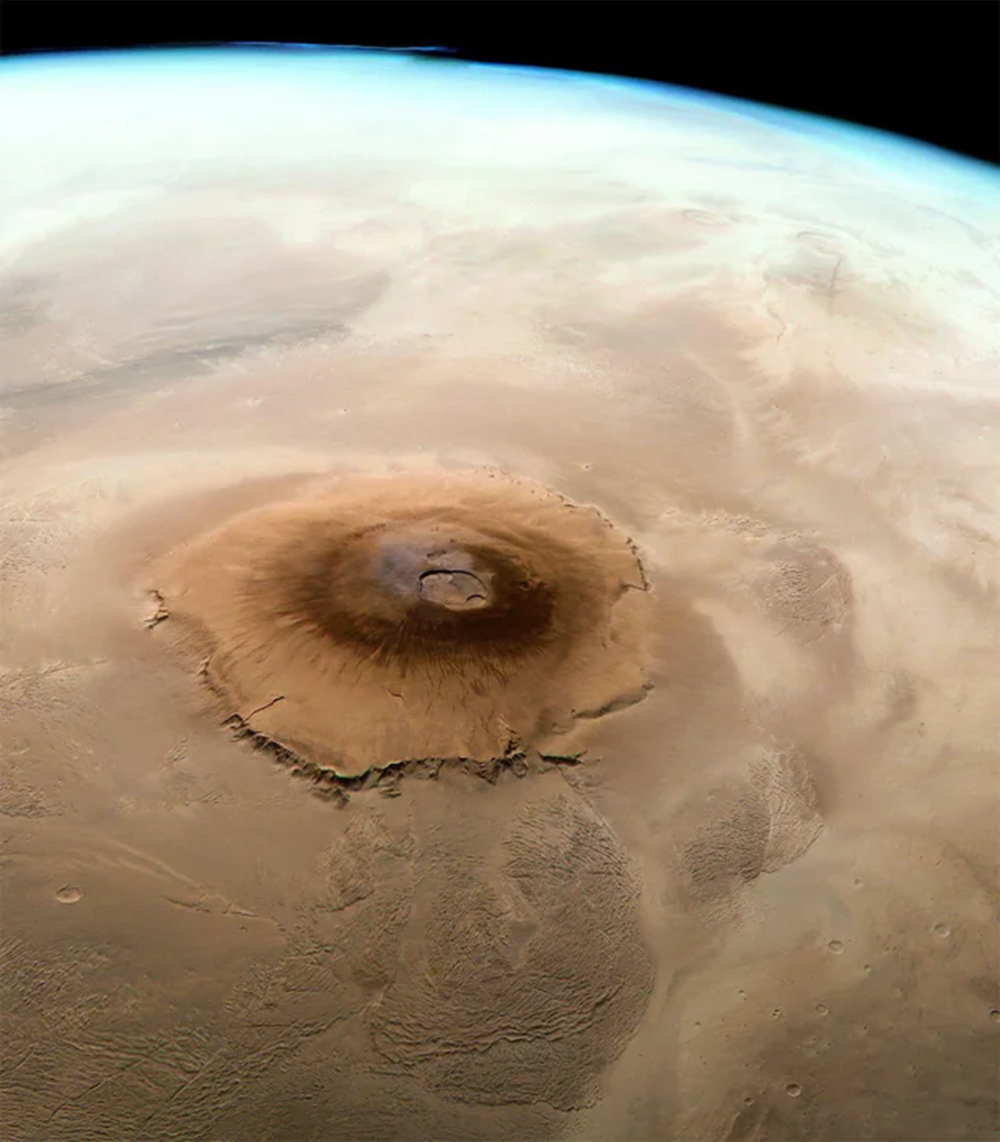- Courses
- GS Full Course 1 Year
- GS Full Course 2 Year
- GS Full Course 3 Year
- GS Full Course Till Selection
- Answer Alpha: Mains 2025 Mentorship
- MEP (Mains Enrichment Programme) Data, Facts
- Essay Target – 150+ Marks
- Online Program
- GS Recorded Course
- Polity
- Geography
- Economy
- Ancient, Medieval and Art & Culture AMAC
- Modern India, Post Independence & World History
- Environment
- Governance
- Science & Technology
- International Relations and Internal Security
- Disaster Management
- Ethics
- NCERT Current Affairs
- Indian Society and Social Issue
- NCERT- Science and Technology
- NCERT - Geography
- NCERT - Ancient History
- NCERT- World History
- NCERT Modern History
- CSAT
- 5 LAYERED ARJUNA Mentorship
- Public Administration Optional
- ABOUT US
- OUR TOPPERS
- TEST SERIES
- FREE STUDY MATERIAL
- VIDEOS
- CONTACT US
NASA Unveils Solar System's Largest Volcano, Olympus Mons
NASA Unveils Solar System's Largest Volcano, Olympus Mons
03-07-2024

Olympus Mons: Largest Volcano: This massive shield volcano on Mars covers an area of up to 373 miles and stands at an altitude of 17 miles, making it the largest volcano in our solar system.
Mars Odyssey Orbiter
- Orbital Operations: The Mars Odyssey orbiter has been in operation around Mars since 2001, completing over 100,000 orbits and contributing to our understanding of Martian geology, life, and the environment.
Recent Image
- Image Capture: Scientists used the orbiter's camera to capture a breathtaking image of Olympus Mons, revealing insights into cloud formation and dust patterns on Mars. The image highlights the significant amount of dust in the Martian atmosphere.
Atmospheric Layers
- Distinct Layers: The image shows distinct layers in the Martian atmosphere:
- Bluish-white band representing dust
- Delicate purple layer resulting from a blend of atmospheric dust and bluish water-ice clouds
- Blue-green layer showcasing water-ice clouds extending approximately 30 miles into the atmosphere.
Seasonal Study
- Mars' Climate: By capturing images at various times throughout the Martian year (which consists of four distinct seasons, each spanning four to seven months), scientists aim to understand how atmospheric conditions evolve over time.
Significance
- Climate Insights: This seasonal study provides valuable insights into the dynamics of Mars' climate and weather patterns, enhancing our understanding of the planet's environmental processes.
Mars Odyssey Mission Details
Early Mission in NASA's Mars Exploration Program
- Launch Date: Launched on April 7, 2001, from Cape Canaveral, Florida, the Mars Odyssey spacecraft has been orbiting Mars since 2001.
- Original Goals: The mission aimed to search for signs of water, create detailed maps of the planet's surface materials, and assess radiation levels for future human exploration.
Record-Breaking Mission
- Longevity: Odyssey holds the record for the longest continually active mission in orbit around a planet other than Earth, and its mission is scheduled to last until 2025.
Global Mapping
- Chemical Elements and Minerals: Odyssey created the first global map of chemical elements and minerals that make up the Martian surface.
- Continuous Observations: The spacecraft continues to study Mars' surface to monitor changes over time.
Communications Relay
- Data Transmission: Odyssey also serves as a communications relay to Earth for spacecraft on the Martian surface, assisting in data transmission.
Facts about Olympus Mons
Shield Volcano
- Western Hemisphere: Located in Mars' western hemisphere, Olympus Mons is a shield volcano, the highest point on Mars, and the largest known volcano in the solar system.
Height and Size
- Massive Dimensions: It stands 16 miles (24 kilometers) high, about three times higher than Mount Everest, and covers an area larger than the entire Hawaiian Islands chain. In contrast, Earth's largest volcano, Mauna Loa in Hawaii, is 120 kilometers across and 9 kilometers high.
Age
- Formation: Olympus Mons is approximately 3.5 billion years old, indicating its formation early in Mars' history.
Gentle Slopes
- Flat Mountain: This volcano features a very flat mountain with slopes of only 2 to 5 degrees.
Summit Caldera
- Caldera: Its summit is marked by a caldera, a large depression resulting from volcanic activity, spanning 50 miles (80 kilometers) wide and consisting of several overlapping pits formed during different eruptive phases.
What are Shield Volcanoes?
Characteristics
- Eruptions: Shield volcanoes, like Olympus Mons, tend to erupt basalt lava, a highly fluid type of lava. Unlike composite volcanoes, shield volcanoes are broad with gentle slopes and are characterized by low-explosivity fountaining that forms cinder and spatter cones at the vent.
Notable Examples
- Hawaiian Shield Volcanoes: The Hawaiian shield volcanoes provide notable examples of this type of volcano.
Must Check: Best IAS Coaching In Delhi



